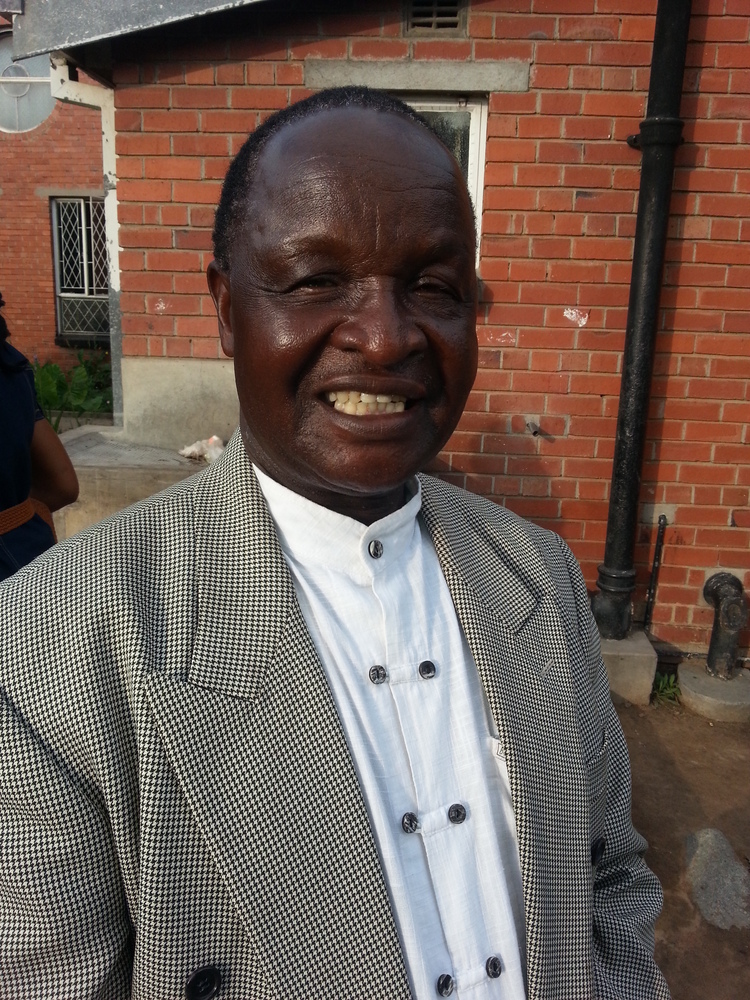
The Sunday Mail

RISING gospel musican Collen Chimuka’s performance at the launch of his album last weekend, which was sandwiched by performances from Afro-jazz sensation Alexio Kawara and fellow gospel artiste Brian Nyahuma, was symbolic: gospel music might indeed be mutating.
Kawara’s solo act, backed by the humming sound of the mbira (thumb piano), was interpreted as an attempt of the gospel music genre to reach out to the popular market.
It now seems that the DNA of gospel music is changing somewhat as artistes are increasingly experimenting on new sounds that are not only novel to the gospel industry but also appealing to the secular world.
The revolution in the local music industry, which began with the urban grooves movement in the late 1990s, and the subsequent evolution of dancehall music of late, has had a disruptive influence on its hierarchy.
There is now a new order.
Undoubtedly, dancehall music is now ruling the roost; sungura, for long nurtured and sustained by the rival and breathtaking artistic genius of Alick Macheso and the late Tongai “Dhewa” Moyo, is wobbly, while gospel music, it might seem, is now at the bottom of the pile.
The pedestrian form of local gospel music for the past decade has not helped.
The template has always been the same: A hypnotic and monotonous drone of the bass guitar, which sometimes sounded out-of-chord; and, of course, the irritating zing of the keyboard.
Most often, the banal lyrics — randomly and meaninglessly lifted from the Bible — combine to make the product unpalatable.
Charles Charamba is arguably the first gospel artiste to make a determined break from this template to create a new brand of music that contained shades of jit, jazz and sungura in the late 1990s.
Through his album haul – “Tinashe Akatendeka” in 1997, “Johanne 3:16” in 1998, “Exodus” in 2001, “Daily Bread” in 2002, “Sunday Service” in 2003, “Verses and Chapters” 2004, “New Testament On Song” in 2007, “Pashoko Pangoma” in 2010 and “WeNazareta” in 2014 — Charamba managed to gain iconic status from gospel music fans and respect from secular music enthusiasts.
But currently the genre needs a new saviour.
Young gospel artistes like Mathias Mhere, Sebastian Magacha and Collen Chimuka are carrying the torch.
Notably, Mhere and Magacha are distinguished by their distinct voices, lyrics and powerful stage presence.
Although Chimuka has the voice and the lyrics, it is his experiment with jiti and Afro-jazz, as manifested by the harmonies in his second album “Zheve Yake Inonzwa”, that possibly hints to a revolution underway in the industry.
This trend is replicating itself across the industry.
His first album “Kurukura Nemusiki” did not perform well. Muting the lyrics on this eight-track album and simply listening at the beat, it is difficult to pass it as gospel music.
Mechanic Manyeruke, who is considered one of the pioneers of gospel music in Zimbabwe and was also at the album launch, noted that he had advised Chimuka on some of the songs.
He emphasised that there was need for artistes to develop music that was distinct and could only be identified with them. “I first met Collen towards the end of last year when he came home to seek advice on his second album. His first one didn’t perform satisfactorily. I listened to the new album; most of the songs were good, but I felt some needed touch-ups.
“I advised him not to adopt styles from other musicians, but to be the creator of his own music so that listeners can identify with his own style,” said Manyeruke, adding: “However, gospel musicians should not lose track.
‘‘It will be difficult for gospel music to compete with secular music, for this to happen there is need for gospel musicians who are truly grounded in the gospel. In that way, it can definitely compete. But there is need to be cautious because if we are not careful, it will be easy to lose our way for the sake of competing.”
For most of his career, Manyeruke was reputed for his authoritative voice that was embellished by a background of distinct guitar notes.
It is a style that he has managed to maintain throughout his career.
Just as in other music genres, the evolution and fate of gospel now lie squarely in the hands of the upcoming young artistes.
The evolution of local gospel
AFTER Independence gospel music was popularised by talented artistes such as Mechanic Manyeruke, Jordan Chataika and Freedom Sengwayo. Their music arrangement was simple but catchy.
Manyeruke, however, shone the most in the early 1990s. Around the same time, new forces began emerging in the industry. Most notably, in 1993, Carol Mujokoro and Ivy Kombo burst onto the scene. For a time, gospel music competed toe-to-toe with other music genres and even threatened to take over.
So popular was the genre that it began to attract top gospel acts from South Africa such as Rebecca Malope, Lundi and Sipho Makhabane.
There were some collaboration between artistes from Zimbabwe and those across the Limpopo. Also local gospel music began borrowing some traits from Mzansi.
Ivy Kombo particularly shone, but her career was dogged by controversy and she later relocated to the United Kingdom.
Elias Musakwa, Shower Power, Charles Charamba, Pastor G and Shingisai Suluma were also in the mix.
Pastor G’s style to a large extent borrowed more from the urban groves movement.
It is Charles Charamba that stole the show in the 1990s. Young artistes like Kudzi Nyakudya also promised.
Most artistes are now largely dormant and they have been drowned out by other genres.





